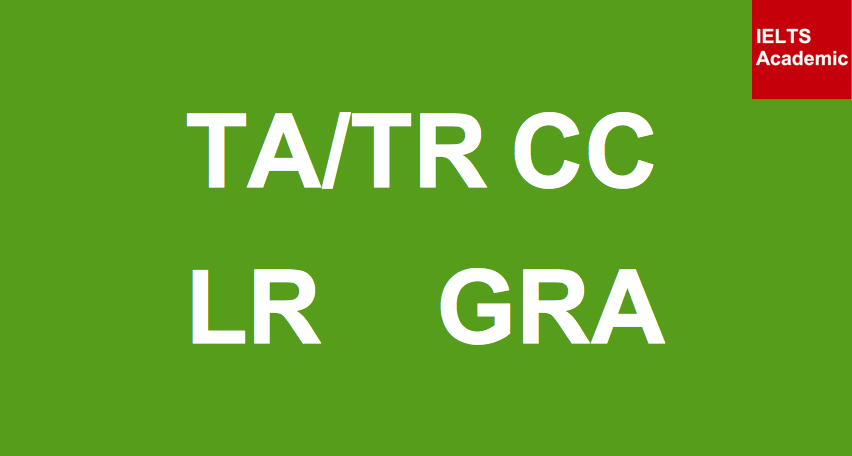If you’ve taken IELTS before, you probably noticed a secret language at the bottom of the IELTS Writing answer sheet. What do those mysterious acronyms TA/TR, CC, LR, & GRA mean?
As you might have guessed, they refer to the assessment criteria which decide your IELTS Writing score. This is where the examiner writes in a number for each of the four assessment criteria, which is then divided by four to give your overall score for that task.
Let’s take a look at the four criteria and how they should influence your writing.
TA/TR = Task Achievement/Task Response
Task Achievement is measured in Task 1, while Task Response is measured in Task 2. In both cases, they refer to how well you answer the question, including:
- Do you write enough words?
- Do you stick to the topic in the question?
- Do you cover all parts of the question?
CC = Coherence and Cohesion
This refers to how well your essay is organised, including:
- Do you write in paragraphs?
- Do you connect sentences and paragraphs with logical links?
- Do you use reference links (‘they’) to connect ideas and avoid repetition?
LR = Lexical Resource
This refers to your use of vocabulary, including:
- Do you use appropriate academic words and collocations? (Academic Writing module only)
- Do you paraphrase to avoid repetition?
- Do you spell words correctly?
GRA = Grammatical Range and Accuracy
This refers to your use of grammar, including:
- Do you use a variety of grammatical forms?
- Do you write in a mixture of short and complex sentences?
- Do you avoid too many grammatical mistakes?
The fastest way to improve your IELTS Writing score is to learn techniques for paragraphing, paraphrasing, and linking, as these skills are less likely to be taught in regular English lessons.
How IELTS Writing scores are calculated
The four individual scores are added together and then divided by four to give an average, which is your overall score for that task. For example: (6+6+7+7) ÷ 4 = 6.5. Numbers are rounded up, which means that (6+7+7+7) ÷ 4 = 6.75, which is rounded up to 7.0.
As there are two tasks of unequal length, your final score in IELTS Writing is not an average of both tasks but is weighted towards Task 2. For example: Task 1: 6.5 + Task 2: 7.0 = Overall 7.0. This is why you should always spend more time writing Task 2.

